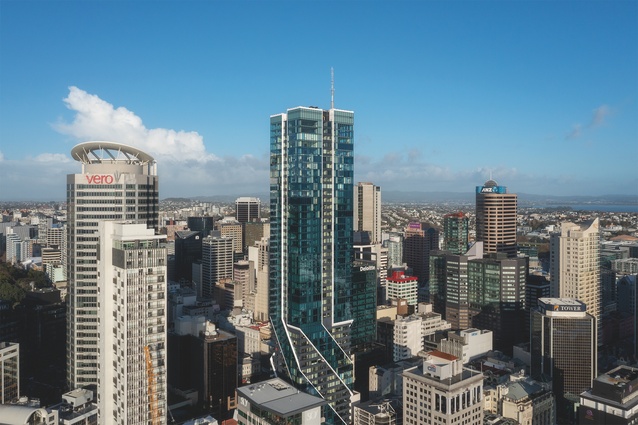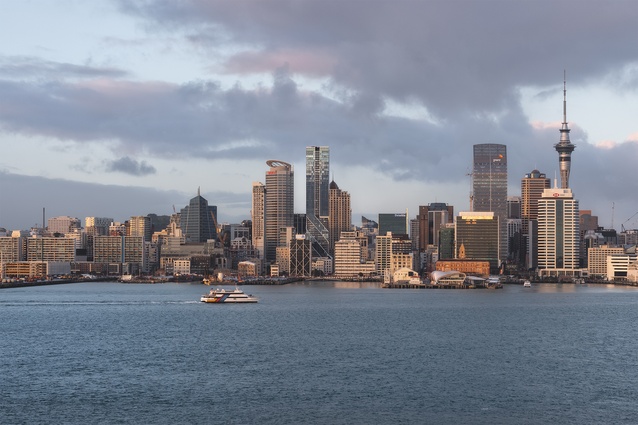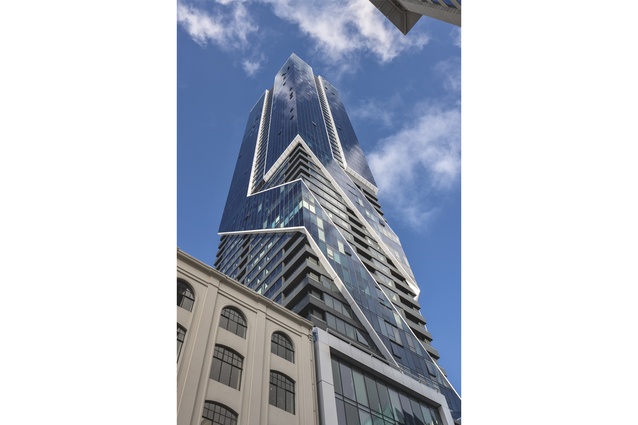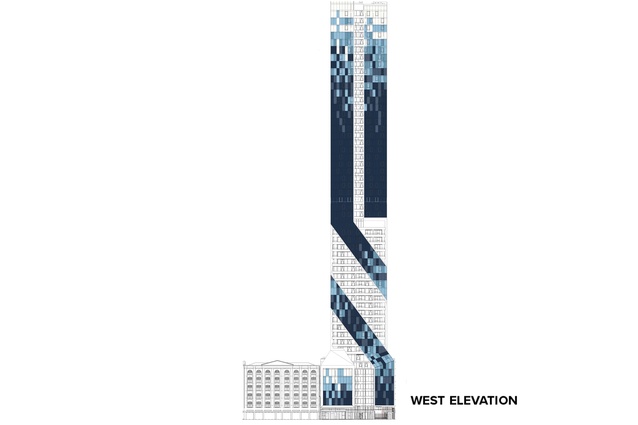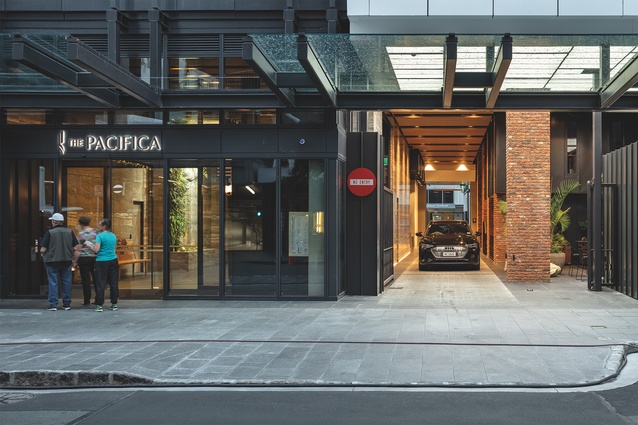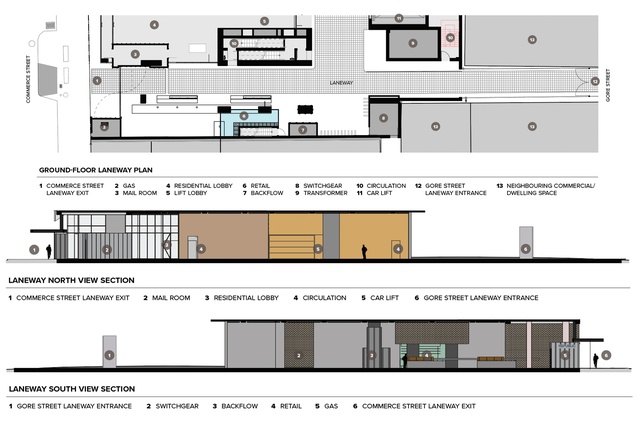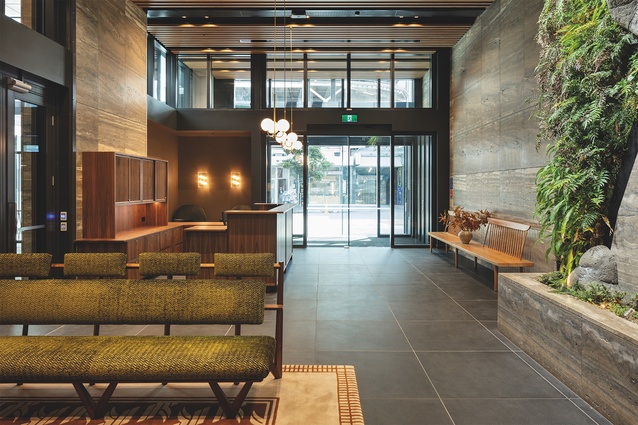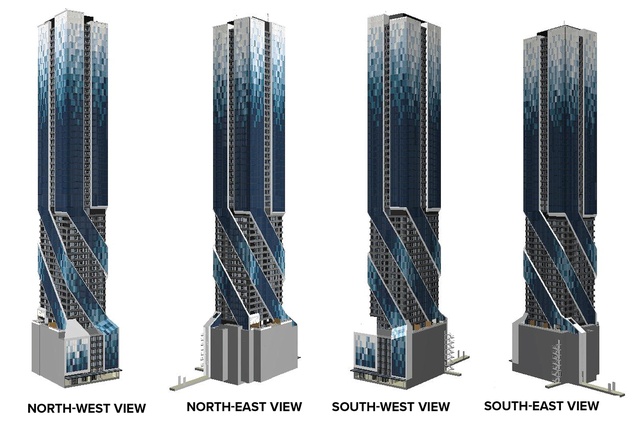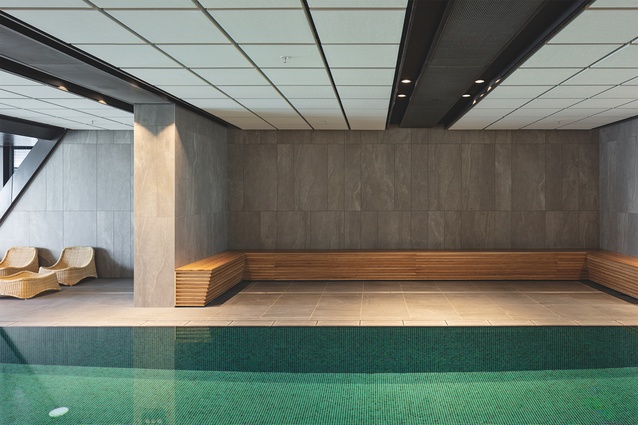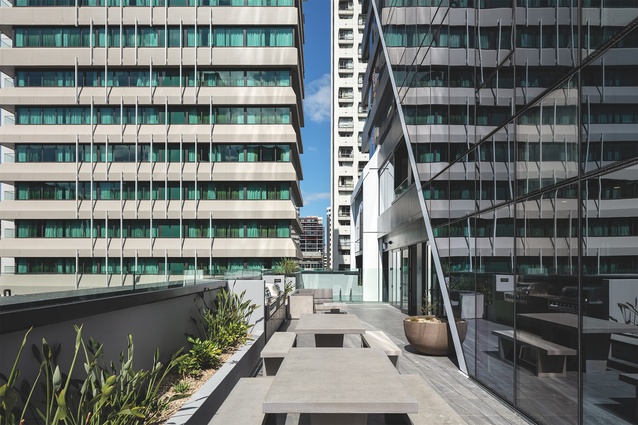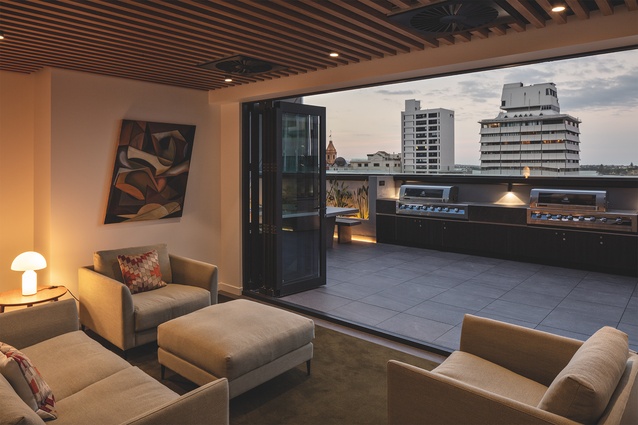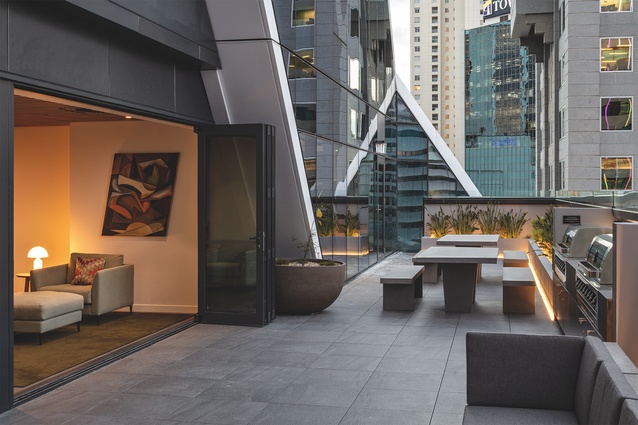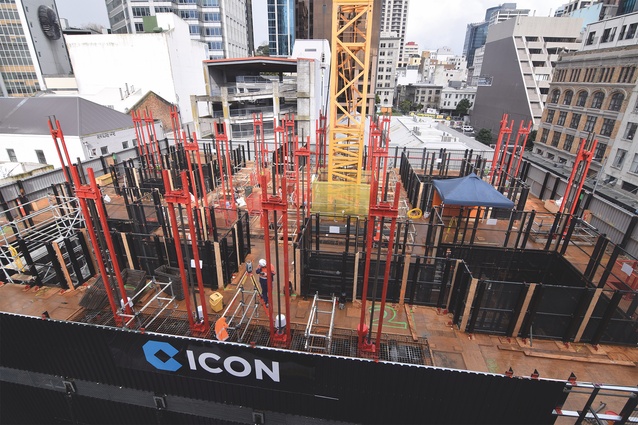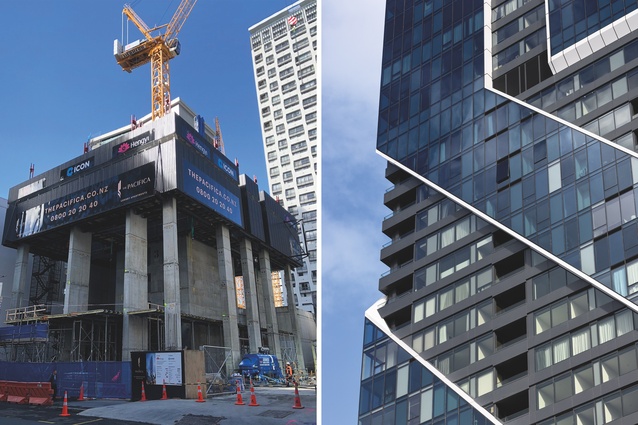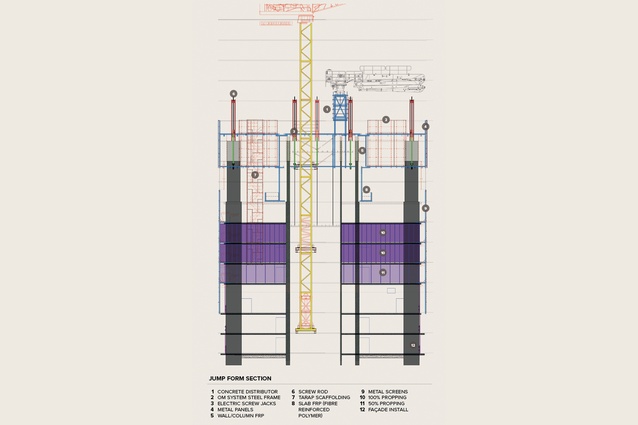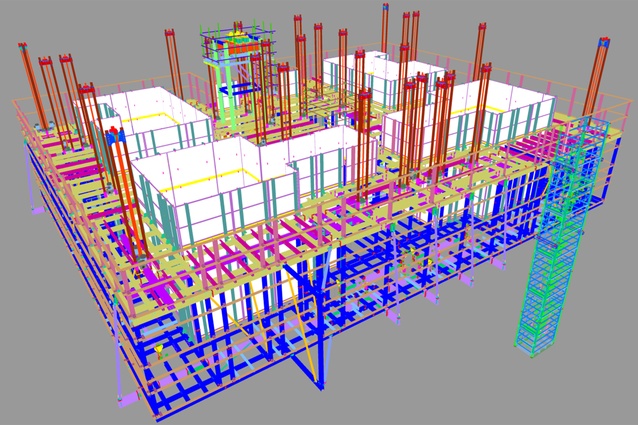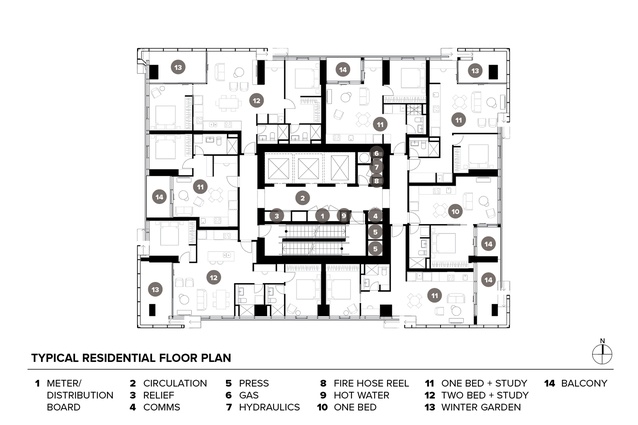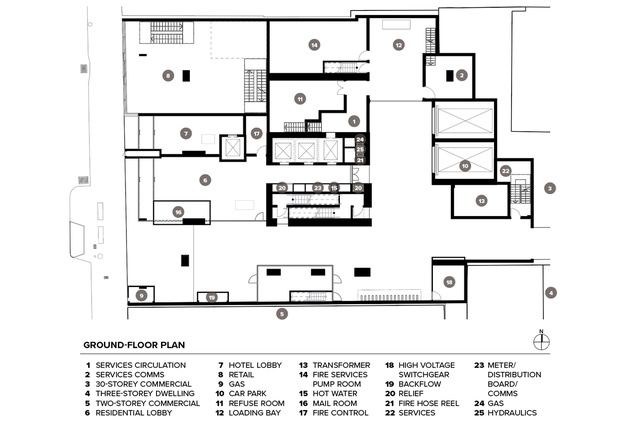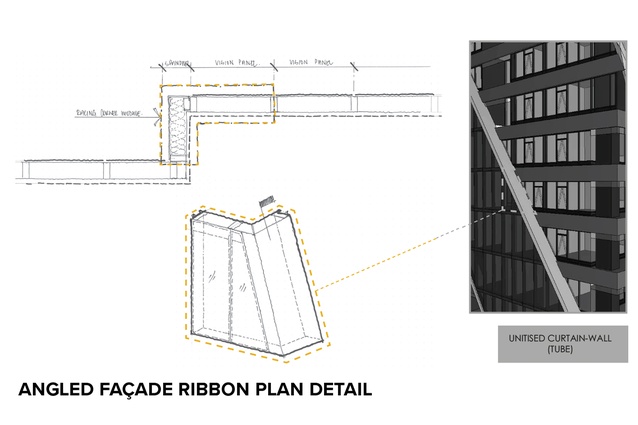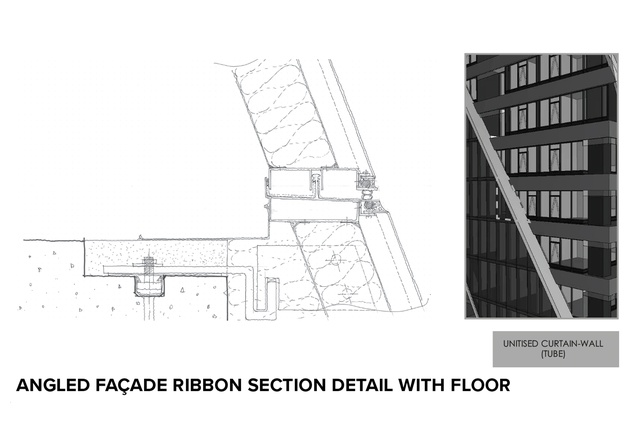Jump with a twist
Guy Marriage investigates the flamboyant façade and innovative climbing formwork of The Pacifica, Auckland’s towering 56-floor apartment building by Plus Architecture.
The Pacifica is Auckland’s newest and tallest apartment building, rising from the former foreshore area on the corner of Commerce and Fort Streets in a flurry of swirling glazing to astound a casual visitor to Auckland like myself. With the arrival of this building, we no longer live in a completely rectilinear and orthogonal world but in a world where a 178m-high skyscraper can swirl its skirts like a flamenco dancer. Where on earth did this come from? How did this come about? Therein lies a tale.
Apartment living is steadily growing more adherents in our queen city, despite its being only a few decades since the first tentative steps were made to live within the central city. Back in the day, city centres were for business and the ’burbs were for living in, with just a few hip urbanistas living in apartment buildings like the Mayfair and Courtville. But, add a couple of million more people, most of whom seem to want to live in Auckland, and voilà, you have the ingredients for massive societal change.
As usual, it’s the Aussies who have forced us to pick up the ball and run with it. Hengyi, a Melbourne-based development company, has been offering these sorts of tall apartment buildings to Melburnians for the last couple of decades and now they’re in the market here, too. Mirrored across on the other side of Queen Street, Commercial Bay tower is all about doing business, while The Pacifica is almost totally focused on apartment living. There’s around 280 apartments (the number varies – I think they may have lost count) within a single building footprint, spread over 56 floors. Because of its foreshore location, there are no basements but, instead, some extremely deep piles and the building is riven in two at the base to feature a laneway through to the other side.
Rather optimistically, the ground-level laneway is also the entry and exit to the car parks that fill up the lower rear part of the building, but next to no one will be driving to work from here – it’s so central that everyone will want to walk to work. Come a long weekend, though, and I’m betting the laneway will be filled with a multitude of flash motors trying to escape Auckland’s evil congestion clutches. Possibly a great location to have a cappuccino in the morning and watch an endless display of Lamborghinis and Porsches carefully inching along this otherwise-pedestrian lane. Don’t you just love the smell of high-octane fuel and coffee in the morning…?
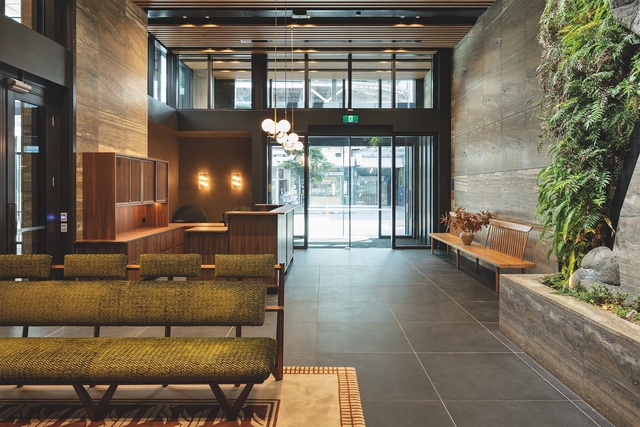
Lower floors of The Pacifica will be filled with a hotel, down where the fun is, readily accessible to the urban business/pleasure mix in Fort Street and nearby Queen Street. The building itself is a frothy cocktail at these lower floors, celebrating the excesses of Fort Street – once an area of ship chandlery, then White Lady burgers and exotic dancing, now rapidly transforming from grungy backpackers to the more upmarket excesses of carefully distressed and oh-so-cool bars. It’s also where The Pacifica’s most outlandish activity happens – the building twists and swirls on the lower floors, with its diagonal stripe racing around all four sides on the lower reaches of the tower, corkscrewing its way up through the undergrowth like a fresh young sapling and, thereafter, just heading straight up. A major structural shift occurs around the 25th floor – the height at which most nearby office towers stop and where The Pacifica continues on. These upper floors, from 28 to 56, relate more to the surrounding sky than to the sea below, in quite a straightforward manner, projecting out with strong rectangular profiles on the corners and retaining a recessed slot in between. The glass façade flickers and changes in the sunlight near the top.
There’s a mix of apartments on the upper floors; inevitably, the smaller, slightly more affordable units are down below and then those big fancy apartments that neither you nor I can afford are up the top. Up here, the tower will relate to only a few other structures: the Commercial Bay tower, the Sky Tower, the Harbour Bridge and, probably, the Auckland Museum, high on a hill in the distance. This head-in-the-cloud attitude will ensure stunning views right over the entire isthmus, for those lucky (and wealthy) purchasers, easily unobstructed out to Rangitoto and even, probably, down to the Coromandel.
The exciting thing for me, as author of two books about tall buildings,1 is the method of construction that this project followed. The Pacifica has a cast-in-situ concrete central core that rises up through the building, housing the three lifts and two escape stairs in a fairly standard situation, with a small corridor to the perimeter of the core and the apartments branching off that. But Icon’s subcontractor Dominion Constructors chose to build the floors using a first for New Zealand: with a full structural footprint jump form, complete with post-tensioning to each slab. We might usually see just the central core going up first but, here, the perimeter columns rose up along with the core, and the post-tensioned floor slabs followed on behind. That’s complicated enough to do at low level, but harder still in a balancing act high in the sky, so the team chose to do nearly everything from within the jump form, pumping the concrete up and carefully pouring it behind that sky-high secretive shrouding. It was a remarkably quick process, too, much to the credit of Dominion and Icon.
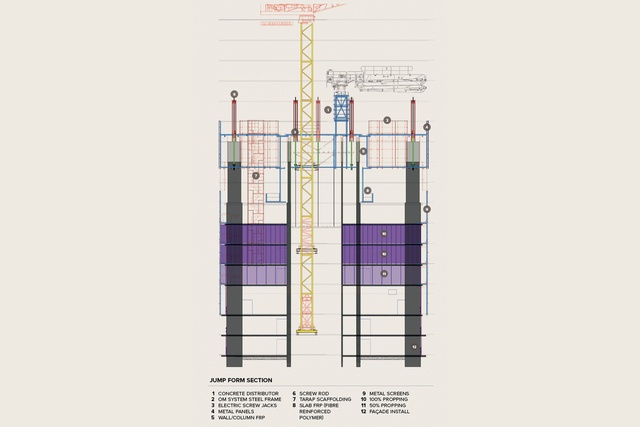
It is, however, the cladding that really sets off the finished building. Project architect Jaimin Atkins (Plus Architecture) explains that the glass is all the same colour tint from the inside and it is just the coating on the glass that gives it a varied look on the exterior. The upper-floor panels certainly sparkle, breaking up what could be a monolithic hulk into a more delicate and shimmering profile; the thin slots assist in making this tower look more like a collection of bundled pillars. While that slot feature supports and encourages the availability of balconies and opening windows in the lower part of the building, up top it will be too windy for these, so air con will be the norm for the upper-level residents.
Without doubt, though, it is the twist that will attract the most attention and will be the love-it or hate-it feature that most people will remember. Name any other apartment building in Auckland that people can identify in a flash like this: “It’s the one with the twist”. Is it a brash Aussie feature from Plus Architecture (author of several very tall apartment towers like this in Melbourne), is it an Asian-inspired feature, courtesy of the Singaporean developer who heads up Hengyi, or is it really reflecting the Māori heritage of the site and the locally based crew of Plus Architects, who helped design this edifice? For me, it feels a little like something from a Christopher Nolan film: more Inception than Tenet or Batman Begins but, nonetheless, firmly planted in the future. Is Auckland ready for the future to happen right now? Better be. It’s already here.

